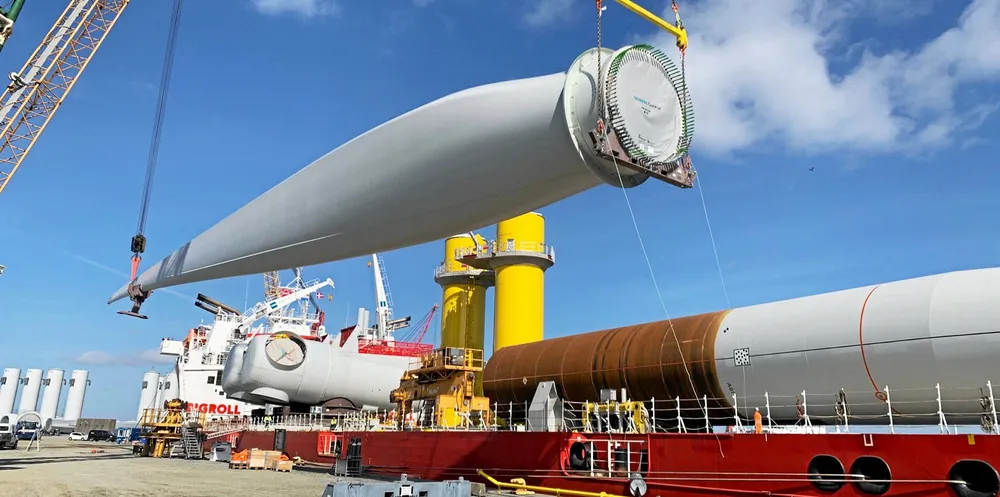US offshore wind supply chain revving up for $100bn-plus bull run to 2030: report
New study from think-tank Special Initiative on Offshore Wind upgrade market prospect by some 40% from two years ago but cautions 'massive effort' ahead for US to capitalise on industrial opportunity

The US offshore wind industry could mushroom into a $109bn market for supply chain companies in the coming decade – far larger than was being forecast before the Biden administration set out the “national goal” earlier this year of having 30GW of plant operating at sea by 2030, according to new calculations from sector body the Special Initiative on Offshore Wind (SIOW).
<b>Focus your mind: get the insight you need with the Recharge Agenda</b>
The global energy transition is gathering momentum – and the accompanying news-stream becoming an information deluge. Separate the green giants from the greenwash and the hard facts from the click-bait headlines with Recharge Agenda, our curation of the market-making events of the week, distilled down into one quick-read newsletter. Sign up here for free
“Major private sector investment in the offshore wind supply chain is certain. What the US must decide is whether we build that energy future, or buy it from other countries,” said SIOW executive director Kris Ohleth.
“There are an enormous number of jobs and significant economic development potential at stake. Governors in dozens of states have the opportunity to make their respective state a centre for offshore wind.”
Other capital spending in the sector to 2030 is expected to total some $16bn, while development expenditure (Devex) will reach over $6bn, and operating expenditure (Opex) coming in just shy of $3bn.
The latest figures are up 40% on SIOW’s 2019 supply chain report, when it forecast a $70bn supply chain opportunity in the offshore wind market by the end of the decade.
“In this 2021 version, we expand our analysis to include both Devex and Opex, offering a more complete perspective of the opportunity of this massive supply chain. In addition, we increase the offshore wind development target from 18.6GW to 30GW by 2030 to reflect the new and expanded offshore wind national target,” said Ohleth.
SIOW underlined that the forecast for component markets were “conservative”, noting “additional public and private expenditures are not captured in this report”, including in local investment in fabrication facilities and port infrastructure, construction of wind turbine installation vessels, and onshore grid upgrades.
“This forecast only accounts for the spending associated with the 32GW of project that will take place before 2030,” said Ohleth. “In the years following 2030, there will be a large portion of the Opex spend continuing as the projects begin to enter operation and some of the capex spend will continue as some of the projects continue their construction.”
Deborah Burke, programme officer at the Rockefeller Brothers Fund, which funded the report, said: “As one of the most abundant sources of clean energy, offshore wind power is not only a feasible replacement for traditional energy sources that pollute our air and water, but can also create astonishing economic opportunities for states willing to attract the private investment necessary to meet the 30GW national target.”
The SIOW spotlighted that while state commitments in the US north-east that amounted to more than 32GW were factored in to its calculations, those without procurements mandates – such as North Carolina, California, and Maine – were not in the analysis.
Overarching the market break-down offered in the SIOW report, said the authors, is the reality of the “massive construction effort… that will be needed to meet the demands of this growing industry”.
Development of a domestic US offshore wind supply chain is seen, along with onshore grid transmission challenges and marine spatial planning with shipping and fisheries sectors, as a main hurdle in the country’s emergence an international industrial play. To date, European contractors have been chiefly responsible for construction of the 42MW built so far, via Rhode Island’s Block Island array and Virginia’s CVOW pilot.
(Copyright)